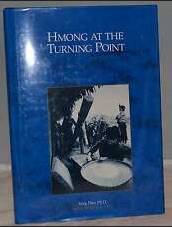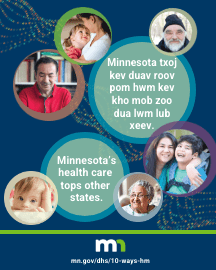
Finding A Purpose For Reading
By Pang Yang, Former ESL And Current Hmong Language And Culture Teacher
Growing up I rarely saw myself reflected in the books I read and hated to read. My elementary teachers motivated students to read by offering incentives such as reading a number of books each month to get a free pizza coupon. So, I tried, just to get my FREE personal pan pizza from Pizza Hut. I loved pizza, but not books. It was not until I was in middle school when I accidently checked out a book from my school library called Just Like Ice Cream by Lisa Halls Johnson about a girl who was going through adolescent struggling to make it through. I fell in love with that book because I could relate to it. My English teachers would assign books to read throughout high school, but none grabbed my love for reading. My first vivid memory of reading a book that connected to who I was as a 1.5 generation refugee was Dr. Yang Dao’s book, Hmong At The Turning Point, that I read during a high school summer program at the University of Minnesota. That made a profound impact to search for who I am. As I went to college to become a teacher, I learned that I had to pass the basic skills test, which included reading. My college Hmong friends and I stumbled on our reading tests for teacher licensure after several attempts, but we did not give up.
What I realized as a teacher now reflecting on my childhood literacy experiences and the Hmong students I teach is that we must help set-up an authentic purpose for reading, provide culturally relevant reading materials, and inspire students to write, at home and in school setting. Setting-up an authentic purpose for reading requires more work than announcing, “We have to read because it is a part of our standards.” Helping students see that what they read can help them find who they are. What they read can help them become the person who they want to be. And what they read can help them discover their passion and happiness in life. Making all these connections for students to set the stage is the first critical step.
Secondly, providing an array of culturally relevant reading materials for students ensures that they will see themselves in the books – their life story, their culture, and their feelings. It can help students feel they are not alone in this enormous world and in an America that is further complicated living in two different worlds. Providing culturally relevant materials for students can be difficult as there is not a plethora of books written in Hmong or English about the Hmong perspective. You must keep in mind that the Hmong Roman Popular Alphabet Writing Script have been developed only in the last 67 years; therefore, written print materials are still a new thing. Living in a society where writing is an important means to convey meaning, we must adapt to writing our stories instead of just telling them orally to preserve who we are.
When I surveyed my high school Hmong students the number of books written in Hmong or English about the Hmong people and experiences, a majority of students responded 0-1 book. It got me thinking, “How can I get more Hmong books into the hands of my students?” Doing my Hmong literature research for the Hmong Heritage Program at my high school, I found a handful of amazing books written specifically for my audience by authors like Patrick Nxhim Vang, Kao Kalia Yang, and more.
Finally, utilizing what I purchased with the existing Hmong book, I realize I must also provide a foundation to produce books that will tell my students stories – the real struggles with their journeys, and the intelligence and resiliency of our Hmong youth in the 21st century. Allowing youths to publish their voices have opened the door to heal the wounds that have been created and to open doors of opportunities for others to see some of our quiet Hmong students in a different way.
Having a clear understanding of how setting up the purpose of literacy for students can play a powerful role in my Hmong heritage classroom. As a result, I not only help students find their purpose for reading culturally relevant books, but because literacy transfers between languages, students become more proficient in English as well. My hope is to instill the love of reading in all my students.
As the new school year begins, here is what you can do as parents to instill the love of reading:
- Be the model, read in front of your kids – it can be your own texts for your job/career or a class your taking.
- Take your child to buy books (check out Scholastic Book Warehouse Sale), Half Price Book Store, or order Hmong book directly from websites.
- Attending author’s read aloud and literacy events, often offered at school or library.
- Set an expectation for reading at home: start with 10 minutes and increase in increments.
- Talk about what everyone in the home is reading.
- Ask your child’s teacher or local librarian for a list of the most popular books or help you/your child identity books that interest them.























